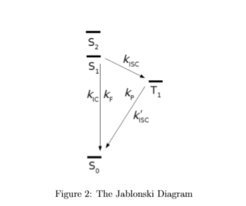Excited States

In 2014, our group began to investigate various ways of implementing the equation of motion (EOM) coupled cluster (CC) theory for large molecules. Our first effort involved using COSX for the evaluation of the external exchange term, which lowered the costs of the calculation but did not change the scaling of the method which remained proportional to the sixth power of some measure of the system size. Similarly, domain-based local pair natural orbitals (DLPNO) can be employed to accelerate the ground state CC step, but since the amplitudes are back-transformed into the canonical basis before the EOM-CCSD code makes use of them, the overall scaling of the method remains unaffected. While the excited states would require state specific DLPNOs, it turns out that the ground state DLPNOs can be used to implement efficient methods for the evaluation of ionization potentials and electron affinities. These on the other hand are necessary ingredients for the so-called similarity transformed EOM or STEOM method, which reduces the the excitation manifold to the space of single excitations without neglecting terms based on a perturbative basis, as second order methods such as CC2 or ADC(2) do. Thus, DLPNOs for the ionization process and the STEOM method for the reduction of the excitation manifold in the canonical basis can be combined to yield the DLPNO-STEOM method, which can be used to obtain excitation energies and some of the spectroscopic properties of molecular systems using several thousand basis functions. In addition, the effect of nuclear vibrations can be included into our description of molecular spectra. Our group has been involved in the efficient implementation of a simple propagator approach to describe various rate constants that appear in the Jablonski diagram shown in Fig. 2. While the fluorescence rate (kF) is determined by the transition dipole moment, which between singlets is only zero if spacial symmetry demands it, transitions between singlet and triplet states are spin forbidden in non-relativistic quantum mechanics. In this picture, the radiative process only competes with non-radiative internal conversion (kIC) in fluorescent materials. If relativistic effects are important, singlet-triplet transitions may become allowed depending on the strength of the SOC connecting the two states. Phosphoresce rates (kP) as well as intersystem crossing rates are proportional to SOC, and the challenge of designing strong emitters lies in ensuring that populating the triplet states and their radiative decay are fast (kISC and kP are large), while the non-radiative decay of the triples is slow (k0ISC is small). Thus, the combination of this propagator scheme with the DLPNO-STEOM method for the computation of vertical excitation energies and transition dipoles is an approach we plan to pursue in the future in what we hope to be a fruitful combination of method development and practical applications.
